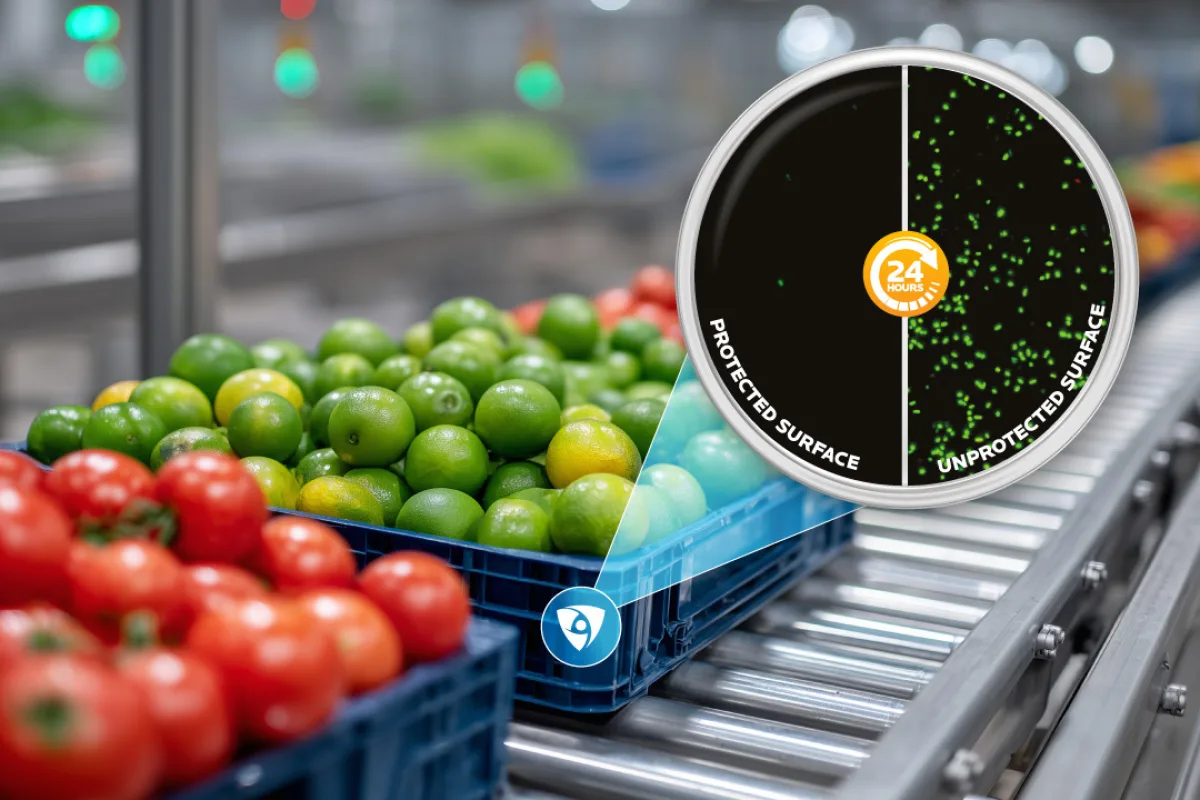Plastic totes and stack crates are the backbone of food distribution. They move meat, produce, and packaged goods across supply chains every day. But these same crates are also prime breeding grounds for microbial growth.
Food residues, condensation, and constant handling create conditions where bacteria, mold, and mildew thrive. Even with regular washing, the reality is that:
Cleaning practices can vary from site to site.
Turnaround times are short, leaving little margin for deep cleaning.
Microbes can recolonize surfaces almost immediately after washing.
That’s why more distribution leaders are looking at innovative tote designs with built-in antimicrobial protection as a way to raise cleanliness standards while supporting operational efficiency.
How antimicrobial product protection helps food distribution center totes stay cleaner for longer
Microban antimicrobial technology can be integrated into plastic during the manufacturing process, offering totes long-lasting protection against bacteria, mold, and mildew. Since this protection is built into the material, it becomes a permanent feature of the tote and cannot be washed off, worn away, or leached out.
What this means in practice:
Cleaner between washes: Crates stay fresher for longer between cleans, reducing microbial-related stains and odors.
24/7 protection: Microban antimicrobial additives continuously work to inhibit microbial growth for the product’s lifetime.
Enhanced product life: Crates resist microbial damage, extending usable life and reducing equipment waste.
Added peace of mind: The Microban Trustmark of technologies signals a strong commitment to product cleanliness and Protection that Lives On.
For management teams responsible for specifying distribution equipment, totes with built-in antimicrobial technology offer a smarter way to enhance surface cleanliness, improve efficiency, and protect brand reputation.

Understanding food distribution center totes and cleanliness challenges
Distribution centers are fast-moving, high-volume environments where surface cleanliness is constantly tested:
-
High turnover, limited downtime: Crates are in near-constant circulation, leaving little time for deep cleaning between reuse.
-
Wear and tear: Over time, crates develop surface damage from heavy use, which can provide harborage points for microbes.
By adopting crates with built-in antimicrobial surface protection, operators can meet these challenges head-on, keeping equipment in better condition, improving consistency across multiple facilities, and supporting a culture of continuous improvement in food distribution settings.








